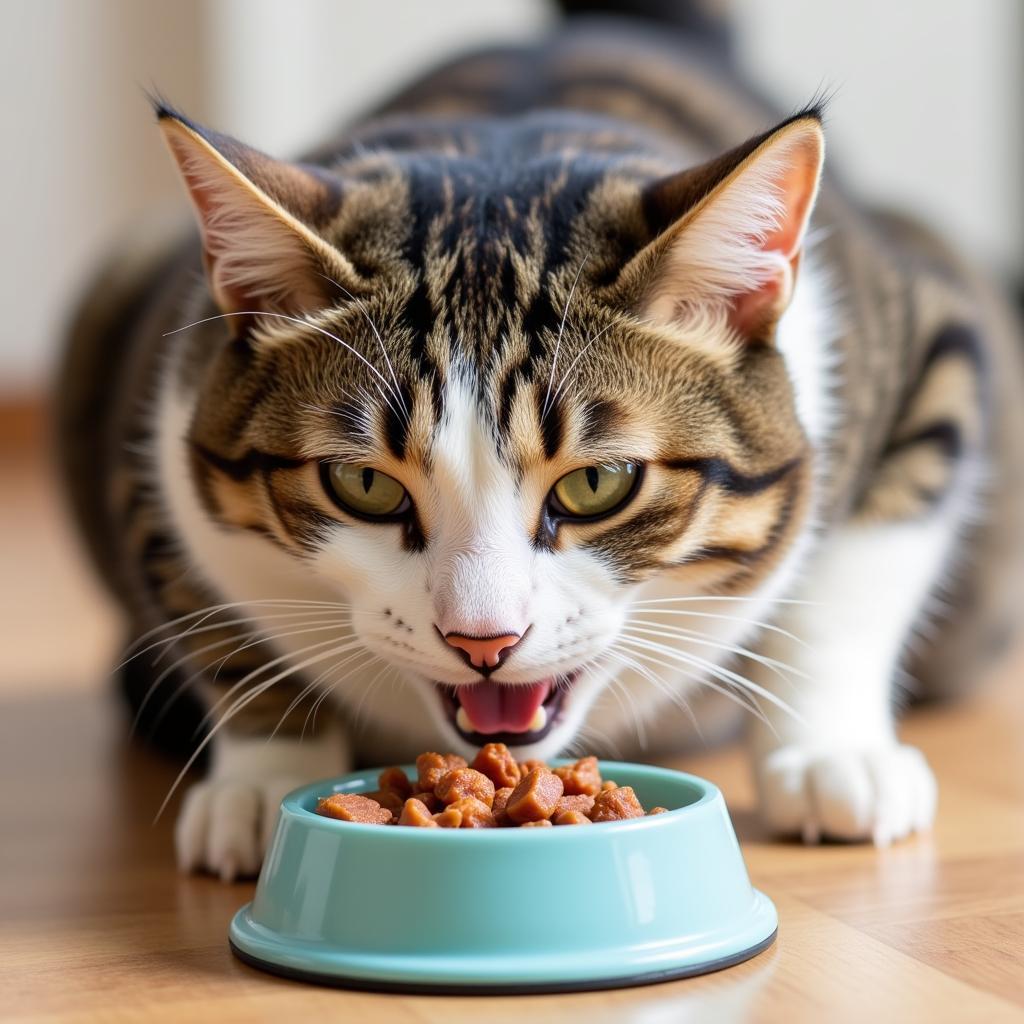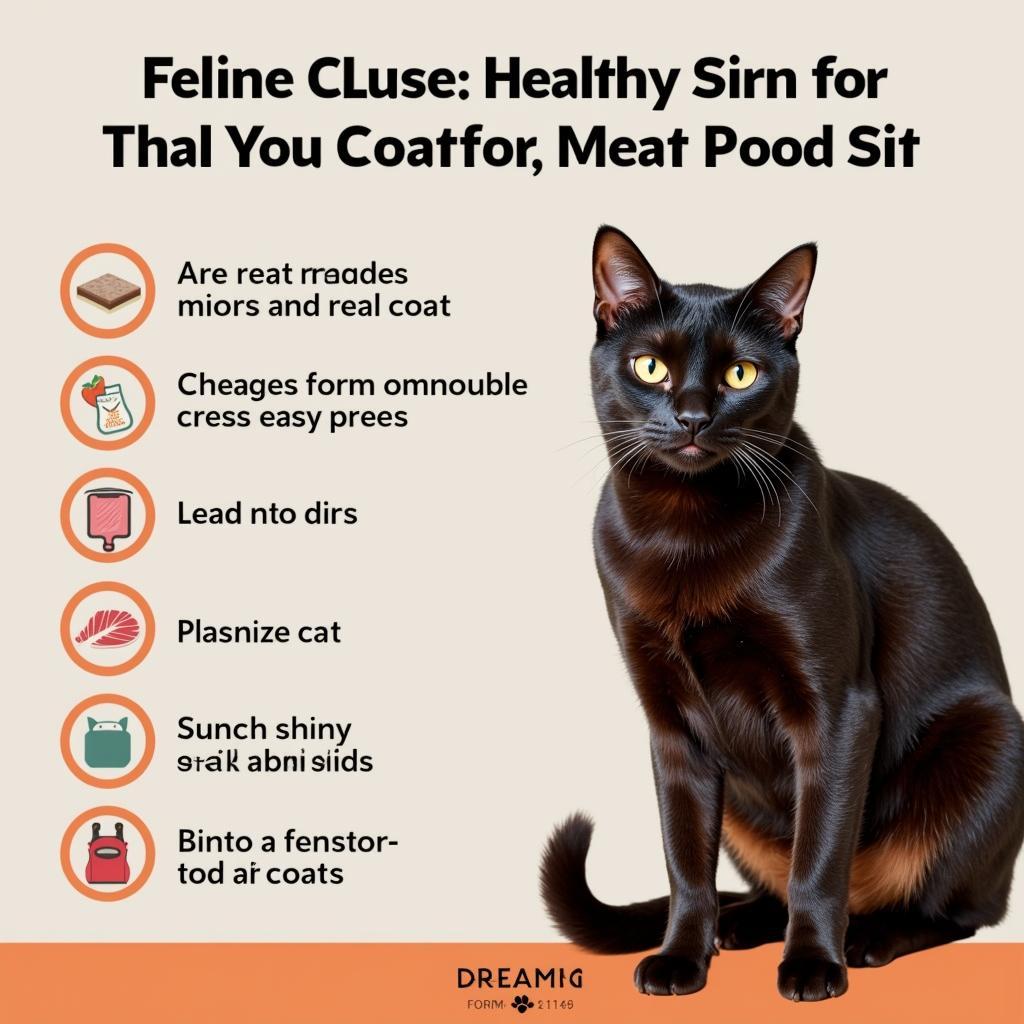Choosing the right cat food is crucial for your cat’s health and well-being. Cat Food With Real Meat provides essential nutrients and offers a taste cats crave. In this article, we’ll delve into the importance of real meat in cat food and guide you on how to select the best option for your furry companion. Let’s explore the world of nutritious and delicious cat food together! You can learn more about proper pet nutrition by checking out resources like those available for Fromm’s Gold dog food.
Why Real Meat Matters in Cat Food
Cats are obligate carnivores, meaning their bodies are designed to thrive on a meat-based diet. Real meat provides essential amino acids like taurine, which is crucial for heart and eye health. Unlike plant-based proteins, real meat offers a complete and balanced amino acid profile that supports muscle development, a healthy immune system, and overall vitality.
The Benefits of a Meat-Rich Diet
- Improved Digestion: Cat food with real meat is typically easier for cats to digest than food with plant-based fillers. This can lead to less vomiting and diarrhea, and better nutrient absorption.
- Enhanced Palatability: Cats are naturally drawn to the aroma and taste of meat. A diet rich in real meat will encourage your cat to eat regularly, ensuring they receive adequate nutrition.
- Healthier Skin and Coat: Real meat provides essential fatty acids that contribute to a shiny coat and healthy skin.
- Increased Energy Levels: A diet rich in animal protein provides cats with the energy they need to play, explore, and enjoy life to the fullest.
 Cat enjoying a bowl of cat food made with real meat
Cat enjoying a bowl of cat food made with real meat
How to Choose Cat Food with Real Meat
Navigating the pet food aisle can be overwhelming. Here’s what to look for when choosing cat food with real meat:
- Check the Ingredient List: Look for a named meat source, such as chicken, turkey, or fish, listed as the first ingredient. Avoid foods with generic terms like “meat by-products” or “animal digest.”
- Look for the AAFCO Statement: The Association of American Feed Control Officials (AAFCO) statement ensures the food meets minimum nutritional requirements for cats.
- Consider Your Cat’s Age and Health: Kittens, adults, and senior cats have different nutritional needs. Choose a food formulated specifically for your cat’s life stage and any health conditions they may have.
- Avoid Fillers and Artificial Ingredients: Choose foods that are free of artificial colors, flavors, and preservatives. Look for foods with limited or no grains, as cats don’t require them in their diet.
Decoding Cat Food Labels
Understanding cat food labels can be tricky. Here are a few tips to help you make informed choices:
- “Complete and Balanced”: This phrase indicates the food provides all the essential nutrients your cat needs.
- Guaranteed Analysis: This section lists the minimum percentages of protein, fat, and fiber in the food.
- Ingredient List: Ingredients are listed in descending order by weight.
Is Expensive Cat Food with Real Meat Always Better?
While quality ingredients often come at a higher price, expensive doesn’t always mean better. Focus on finding a food that meets your cat’s nutritional needs and budget. There are many affordable options available that prioritize real meat and avoid unnecessary fillers. If you are looking for ways to maintain a healthy, balanced diet for your pets, you may find our post on Distri Foods helpful.
“Choosing cat food with real meat is an investment in your cat’s health,” says Dr. Emily Carter, DVM. “It provides the essential nutrients they need to thrive.”
Conclusion
Feeding your cat a diet rich in real meat is essential for their overall health and well-being. By carefully examining cat food labels and prioritizing quality ingredients, you can ensure your feline friend receives the nutrition they need to live a long and happy life. Remember to choose cat food with real meat as a key ingredient. Planning a party? Check out our guide on Construction Party Food.
FAQ
- What are the signs of taurine deficiency in cats? Blindness, heart problems, and reproductive issues.
- Can I feed my cat a vegetarian diet? No, cats are obligate carnivores and require meat in their diet.
- How much food should I feed my cat? Follow the feeding guidelines on the cat food label and adjust based on your cat’s individual needs.
- What are some signs of food allergies in cats? Itching, vomiting, diarrhea, and skin infections.
- How often should I change my cat’s food? It’s best to stick to one type of food unless recommended by a veterinarian. Sudden changes can cause digestive upset.
- Why is my cat not eating its food? Several reasons, including illness, stress, or simply not liking the food.
- Should I feed my cat wet or dry food? Both have pros and cons; consult with your vet to determine what’s best for your cat.
Need more information about maintaining your pet’s health? You might find our article on food for soft hair oil interesting, even though it focuses on a different aspect of pet care.
Want to know more about food options for different occasions? Our article on the Mr Greek Food Truck Menu might pique your interest.
 A healthy cat with a shiny coat thanks to a diet rich in real meat
A healthy cat with a shiny coat thanks to a diet rich in real meat
“Providing your cat with a species-appropriate diet is the foundation of good health,” adds feline nutritionist, Sarah Johnson.
For any support, contact us at Phone Number: 02437655121, Email: minacones@gmail.com Or visit us at: 3PGH+8R9, ĐT70A, thôn Trung, Bắc Từ Liêm, Hà Nội, Việt Nam. We have a 24/7 customer support team.